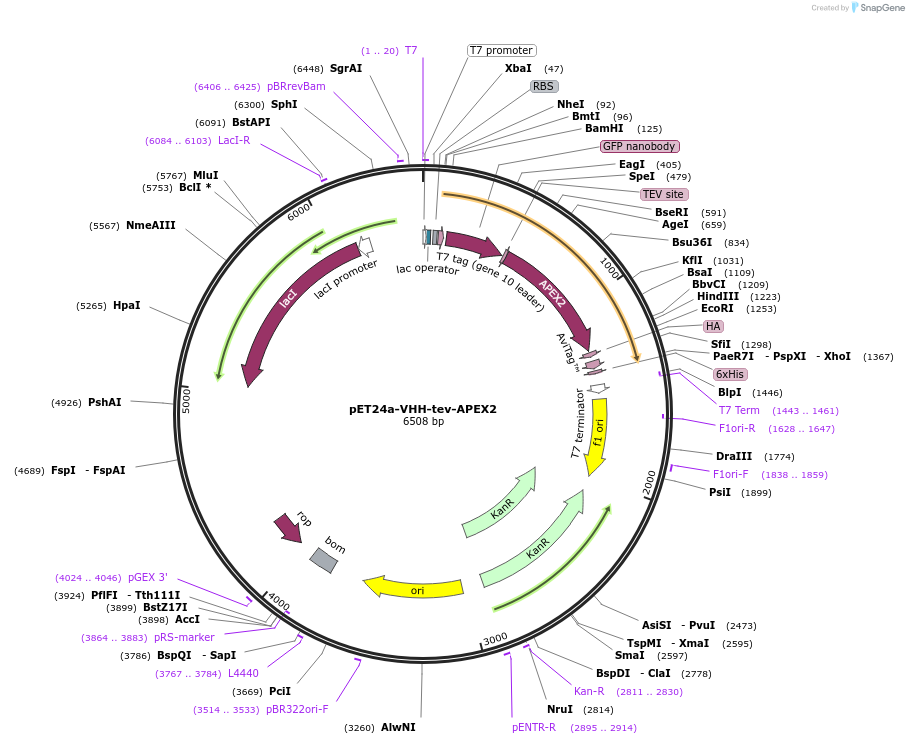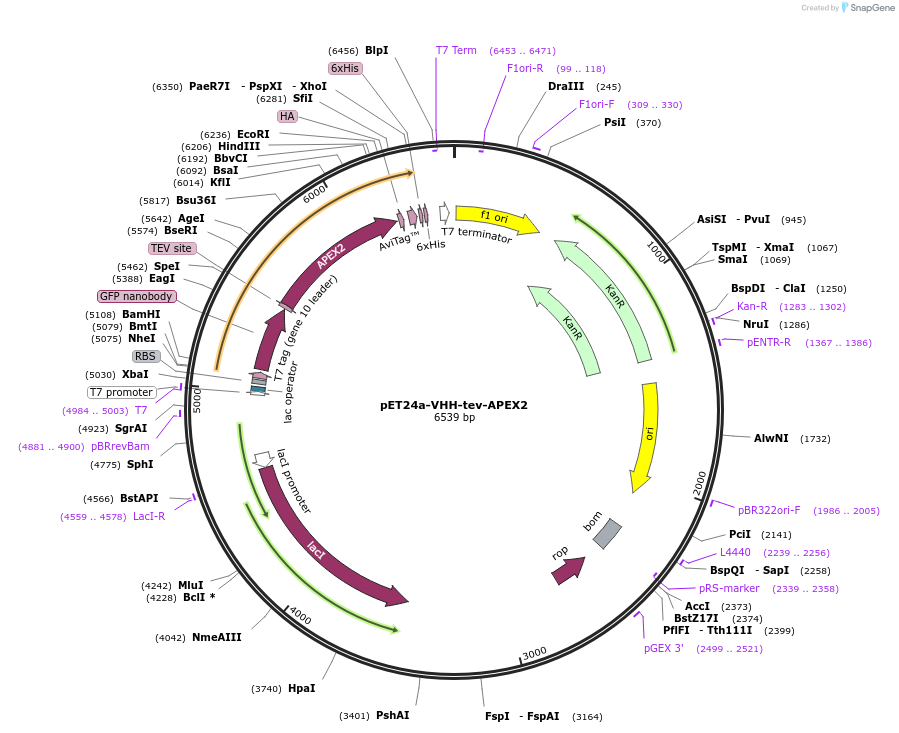pET24a-VHH-tev-APEX2
(Plasmid
#117751)
-
PurposeBacterial expression of a functionalized anti-GFP (VHH) nanobody fused to ascorbate peroxidase 2. VHH-APEX2 also contains a T7, HA, BAP, tev cleavage site and His6 epitope
-
Depositing Lab
-
Sequence Information
Ordering
| Item | Catalog # | Description | Quantity | Price (USD) | |
|---|---|---|---|---|---|
| Plasmid | 117751 | Standard format: Plasmid sent in bacteria as agar stab | 1 | $89 | |
Backbone
-
Vector backbonepET24a
-
Backbone manufacturerMerck - Novagen
- Total vector size (bp) 6540
-
Vector typeBacterial Expression
Growth in Bacteria
-
Bacterial Resistance(s)Kanamycin, 50 μg/mL
-
Growth Temperature37°C
-
Growth Strain(s)DH5alpha
-
Copy numberLow Copy
Gene/Insert
-
Gene/Insert nameanti-GFP nanobody fused to a T7, tev site, APEX2, HA, BAP and His6 epitope
-
Alt nameVHHGFP4
-
Alt nameascorbate peroxidase 2
-
SpeciesSynthetic; soybean
-
Insert Size (bp)1302
- Promoter T7
-
Tags
/ Fusion Proteins
- T7 (N terminal on insert)
- HA (C terminal on insert)
- BAP (C terminal on insert)
- His6 (C terminal on insert)
Cloning Information
- Cloning method Restriction Enzyme
- 5′ cloning site NheI (not destroyed)
- 3′ cloning site XhoI (not destroyed)
- 5′ sequencing primer TAATACGACTCACTATAGGG
- 3′ sequencing primer TGCTAGTTATTGCTCAGCGG
- (Common Sequencing Primers)
Terms and Licenses
-
Academic/Nonprofit Terms
-
Industry Terms
- Not Available to Industry
Trademarks:
- Zeocin® is an InvivoGen trademark.
These plasmids were created by your colleagues. Please acknowledge the Principal Investigator, cite the article in which the plasmids were described, and include Addgene in the Materials and Methods of your future publications.
-
For your Materials & Methods section:
pET24a-VHH-tev-APEX2 was a gift from Martin Spiess (Addgene plasmid # 117751 ; http://n2t.net/addgene:117751 ; RRID:Addgene_117751) -
For your References section:
Analysis of Endocytic Uptake and Retrograde Transport to the Trans-Golgi Network Using Functionalized Nanobodies in Cultured Cells. Buser DP, Spiess M. J Vis Exp. 2019 Feb 21;(144). doi: 10.3791/59111. 10.3791/59111 PubMed 30855580




